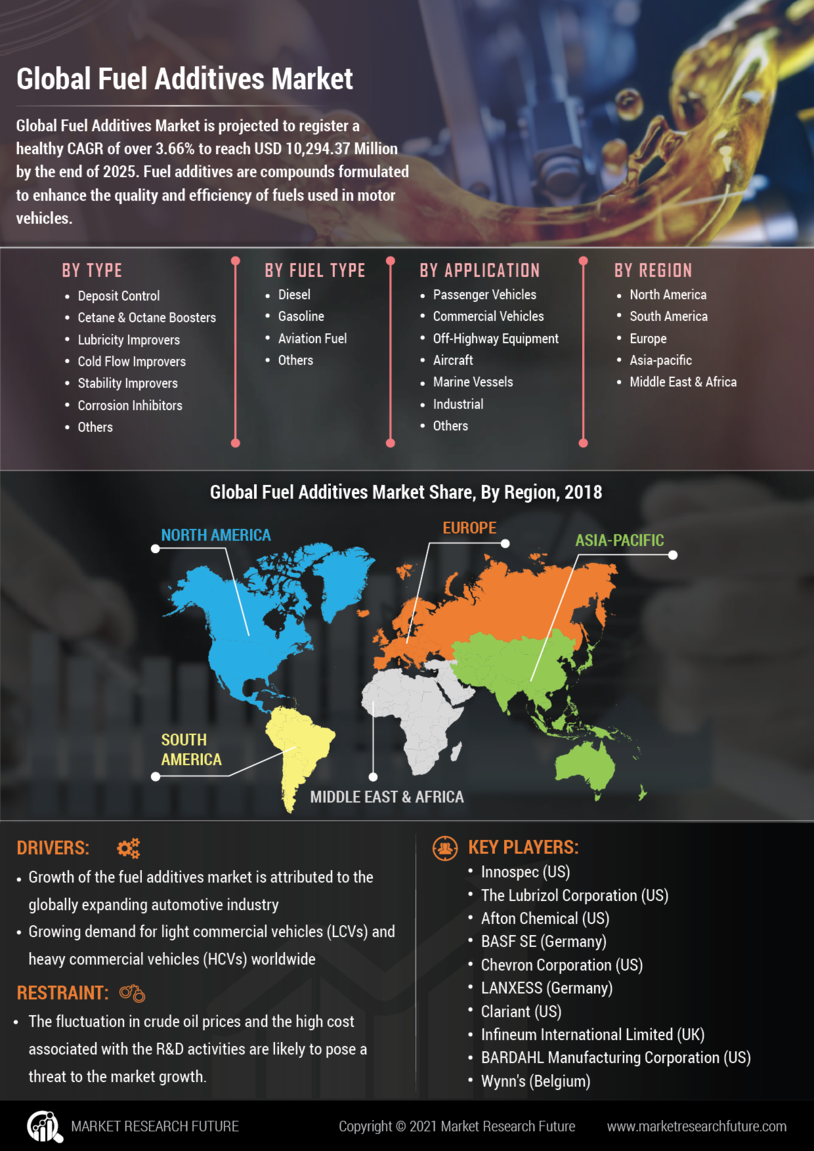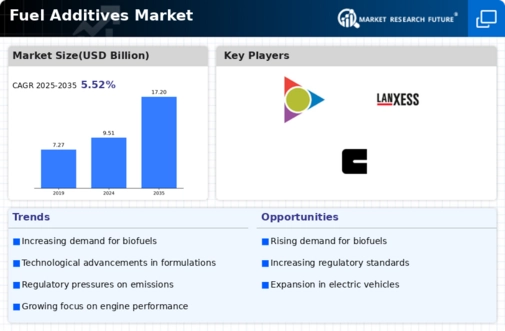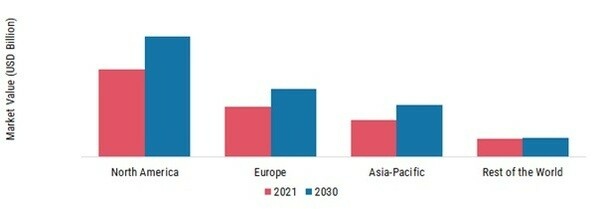Market Growth Projections
The Global Fuel Additives Market Industry is projected to experience substantial growth over the next decade. With a market value of 9.51 USD Billion in 2024, it is expected to reach 17.2 USD Billion by 2035, reflecting a robust CAGR of 5.52% from 2025 to 2035. This growth trajectory is driven by various factors, including rising demand for cleaner fuels, technological advancements, and increasing focus on fuel efficiency. The market's expansion is indicative of the ongoing transformation within the energy sector, as stakeholders adapt to changing consumer preferences and regulatory landscapes.
Growth of Automotive Sector
The automotive sector's expansion significantly influences the Global Fuel Additives Market Industry. As vehicle production and sales continue to rise globally, the demand for high-performance fuels and additives is expected to increase correspondingly. Emerging markets, particularly in Asia-Pacific and Latin America, are experiencing rapid growth in vehicle ownership, which drives the need for fuel additives that enhance fuel efficiency and engine performance. This trend is further supported by the increasing adoption of hybrid and electric vehicles, which still require specific fuel formulations. Consequently, the market is poised for substantial growth, reflecting the automotive industry's robust trajectory.
Rising Demand for Cleaner Fuels
The Global Fuel Additives Market Industry is witnessing an increasing demand for cleaner fuels driven by stringent environmental regulations. Governments worldwide are implementing policies aimed at reducing emissions from vehicles and industrial processes. For instance, the introduction of low-sulfur fuels and biofuels has prompted refiners to incorporate additives that enhance fuel quality and reduce harmful emissions. This shift is expected to contribute to the market's growth, with projections indicating a market value of 9.51 USD Billion in 2024. As consumers become more environmentally conscious, the demand for fuel additives that improve combustion efficiency and reduce pollutants is likely to rise.
Increasing Focus on Fuel Efficiency
The emphasis on fuel efficiency is a critical driver of the Global Fuel Additives Market Industry. With rising fuel prices and growing concerns about energy security, consumers and manufacturers alike are seeking solutions to optimize fuel consumption. Fuel additives that improve combustion efficiency and reduce fuel consumption are becoming increasingly popular. For instance, additives that enhance cetane numbers in diesel fuels can lead to better fuel economy and lower emissions. This focus on efficiency is likely to propel the market forward, as both consumers and industries prioritize cost-effective and environmentally friendly fuel options.
Regulatory Compliance and Standards
Regulatory compliance is a significant factor influencing the Global Fuel Additives Market Industry. Governments and regulatory bodies are establishing stringent standards for fuel quality and emissions, compelling manufacturers to adopt advanced fuel additives. Compliance with these regulations not only ensures environmental protection but also enhances the competitiveness of fuel products in the market. For example, the European Union's stringent regulations on sulfur content in fuels have led to increased demand for additives that meet these standards. As regulations continue to evolve, the market is expected to adapt, driving innovation and growth in the fuel additives sector.
Technological Advancements in Fuel Additives
Technological innovations are playing a pivotal role in shaping the Global Fuel Additives Market Industry. The development of advanced formulations and new chemical compounds enhances the performance of fuel additives, leading to improved engine efficiency and reduced wear. For example, the introduction of multifunctional additives that serve multiple purposes, such as detergents and lubricants, is gaining traction. These advancements not only optimize fuel performance but also extend engine life, which is increasingly appealing to consumers. As a result, the market is projected to grow at a CAGR of 5.52% from 2025 to 2035, reaching an estimated value of 17.2 USD Billion by 2035.





